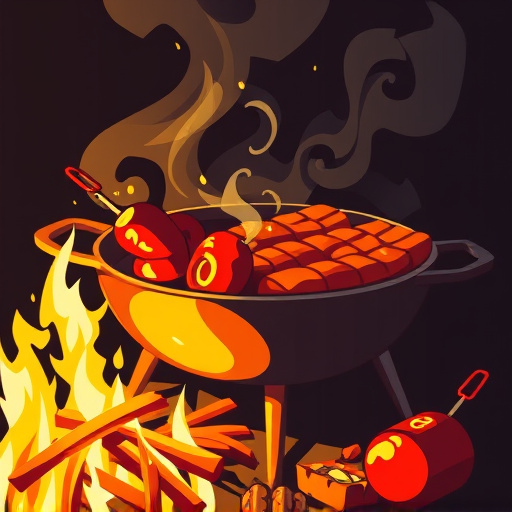Creating delicious BBQ spare ribs involves selecting the right cuts (baby back or spare ribs with good marbling), removing the membrane, and using a simple yet effective spice rub. This guide explores the rib types, selection tips, and a custom dry rub recipe to achieve perfectly cooked, tender spare ribs, satisfying any appetite with a classic BBQ spare ribs recipe.
“Unleash the classic Southern charm of perfectly cooked BBQ spare ribs! This comprehensive guide takes you on a journey from choosing the right cuts to mastering the art of slow cooking. Learn the secrets behind creating a mouthwatering dry rub, selecting the ideal sauce, and ensuring every rib reaches its tender apex. By following these steps, you’ll craft a BBQ spare ribs recipe that’s sure to impress even the pickiest eaters.”
- Choosing and Preparing the Perfect Ribs
- – Types of BBQ ribs: spareribs vs. baby back ribs
- – Selecting quality cuts: what to look for
- – Dry rubbing: essential spices and how to create your own blend
Choosing and Preparing the Perfect Ribs
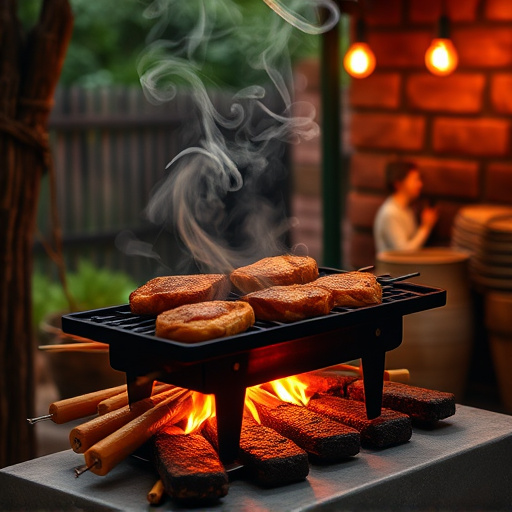
When it comes to classic southern-style barbecue ribs, choosing the right cut is essential for a delicious outcome. Opt for baby back or spare ribs, which are tender and meaty, perfect for slow-smoking. Look for ribs with a good marbling of fat, as this adds flavor and moisture during the cooking process. Proper preparation is key; start by stripping the membrane from the bone side, removing any silver skin for a smoother finish. Rubbing the ribs with a dry spice mix beforehand enhances their natural taste, allowing flavors to penetrate deep into the meat. A classic BBQ spare ribs recipe involves a simple rub of salt, pepper, garlic powder, and paprika, ensuring each rib is coated evenly.
– Types of BBQ ribs: spareribs vs. baby back ribs
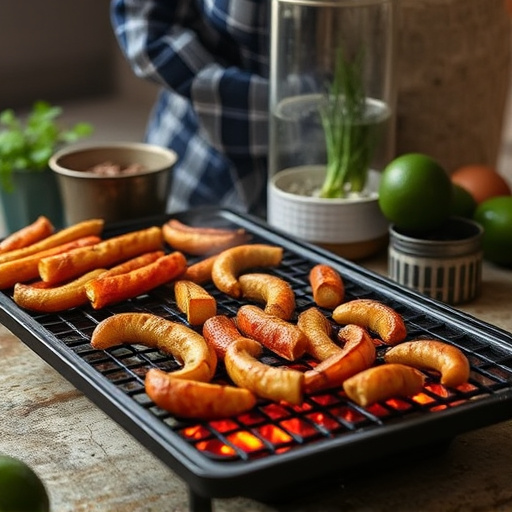
When it comes to BBQ ribs, there are two main types that food enthusiasts often debate: spareribs and baby back ribs. Each has its unique characteristics and caters to different tastes. Spareribs, as the name suggests, include the whole rib cage, offering a hearty and meaty experience. These ribs have more bone and fat marbling, which results in a tender, fall-off-the-bone texture when cooked properly. A BBQ spare ribs recipe often calls for slow cooking to break down the connective tissues, ensuring each bite is a delicious explosion of flavor.
On the other hand, baby back ribs are a milder alternative, taken from the top of the rib rack, below the loin muscle. They have less bone and fat, making them slightly leaner but no less tasty. Baby back ribs are known for their sweet and smoky flavor profile, often achieved through various rubs and sauces. Whether you prefer the hearty spareribs or the more delicate baby backs, both styles offer a classic southern-style BBQ experience, each with its own devoted fan base.
– Selecting quality cuts: what to look for
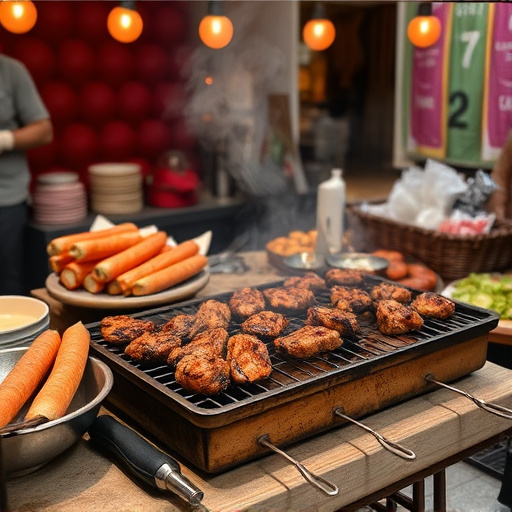
When it comes to classic southern style BBQ ribs, selecting the right cuts is paramount for achieving that perfect, tender, and juicy result. Look for bbq spare ribs recipe that feature a good marbling of fat throughout the meat. The membrane on the bone side should be intact and thin, allowing for easier peeling once cooked. Opt for ribs with a deep red color and firm yet supple texture—signs of quality and freshness. Avoid any ribs that are overly meaty or have large chunks of fat, as these can lead to a tougher final product.
Focus on choosing ribs from well-regarded butchers or sources known for their commitment to quality. While whole slabs are popular, consider cutting them into individual segments for more precise cooking control. This allows you to target specific areas with different levels of heat and moisture, ensuring each rib is cooked perfectly, locking in that mouthwatering flavor and tenderness that defines the best bbq spare ribs recipe.
– Dry rubbing: essential spices and how to create your own blend
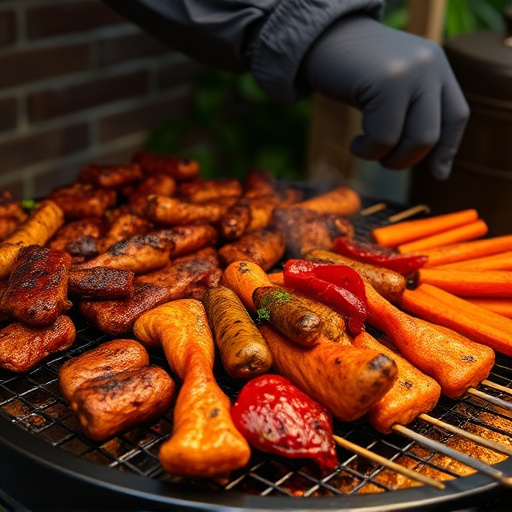
Achieving perfectly cooked BBQ spare ribs starts with a dry rub—a blend of essential spices that infuse the meat with flavor. Creating your own allows for customization to suit your taste preferences. A classic southern-style rub incorporates salt, pepper, paprika, garlic powder, and brown sugar. These ingredients not only add depth but also help in tenderizing the ribs during slow cooking.
To make your dry rub, mix 2 parts salt, 1 part each of coarse black pepper and paprika, half a part of garlic powder, and a pinch of cayenne for heat (adjust quantities to your liking). Store the mixture in an airtight container until ready to use. Rubbing the spice blend all over the ribs before cooking ensures even flavor penetration, resulting in tender, succulent BBQ spare ribs that are sure to satisfy any appetite.
